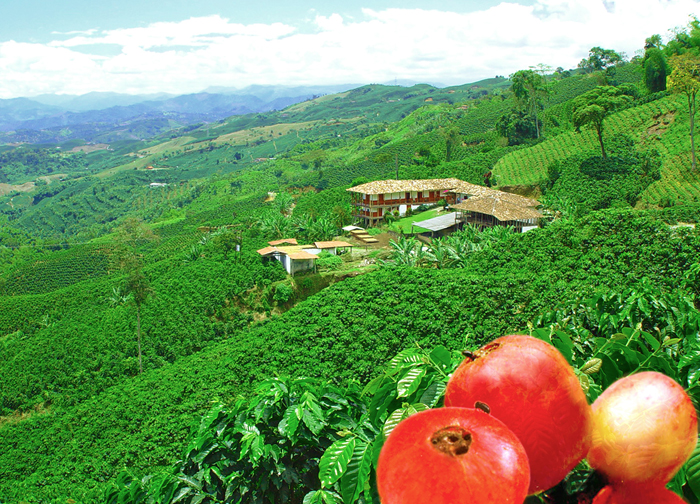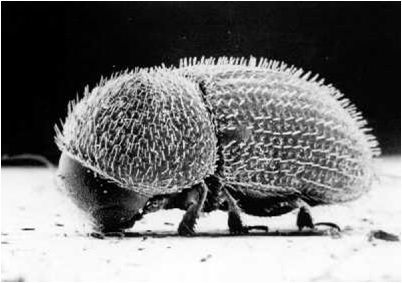Scientists Take On Coffee-Loving Pests

This Research in Action article was provided to LiveScience in partnership with the National Science Foundation.
A freshly brewed cuppa joe quickens the step and sets the mind a-glow. But that singular taste sensation is at risk because of a pinhead-sized beetle. Affecting coffee plants throughout the world, the coffee berry borer beetle (Hypothenemus hampei) destroys $500 million in crop yield annually when it burrows into coffee beans and lays eggs. In Columbia, the world's second biggest supplier of Arabica beans after Brazil, the problem is especially acute.
To help Cenicafe, Columbia's national coffee institute, devise a strategy to deal with the coffee-loving pests, Cornell University researcher Jocelyn Rose shared results from his research on how fruits soften. For that work, he and his colleagues developed gene sequencing, bioinformatics, and modeling tools to study the tomato secretome, an important component of the plant genome that contributes to processes ranging from fruit softening to disease resistance.

The same tools helped Rose and Cenicafe researchers identify a gene within the coffee beetle genome that encodes an enzyme called mannanase, which can digest the storage carbohydrates of coffee beans. What's unusual about the discovery is the mannanase gene appears to have originated from bacteria. This suggests that gene transfer occurred between non-similar organisms — from a bacterium to an animal.
"Finding the sequence was a surprise because a mannanase gene hadn't been found in an insect before," says Rose. "Although it was present in the beetle genome, the sequence had several hallmarks of a bacterial gene."
Non-sexual DNA movement between different species, termed horizontal gene transfer (HGT), is common among bacteria, but was previously considered rare between bacteria and eukaryotes (complex, multi-cellular organisms). However, Rose says "such transfer of genes is likely to be more common that we think."
In the case of the coffee beetle, HGT may result from evolutionary adaptation. The large-scale cultivation of a single crop such as coffee likely puts "huge pressure on organisms to adapt to the niche," says Rose. "Any minor opportunity is seized upon." For the beetle, the bacterial gene allows it to survive in a coffee-only environment.
Sign up for the Live Science daily newsletter now
Get the world’s most fascinating discoveries delivered straight to your inbox.
During their studies, the researchers also identified genetic elements called transposons, or jumping genes, on either side of the transferred mannanase gene. Jumping genes move from one location in the genome to another and may, according to the researchers, have assisted in the transfer process.
Editor's Note: Any opinions, findings, and conclusions or recommendations expressed in this material are those of the author and do not necessarily reflect the views of the National Science Foundation. See the Research in Action archive.










